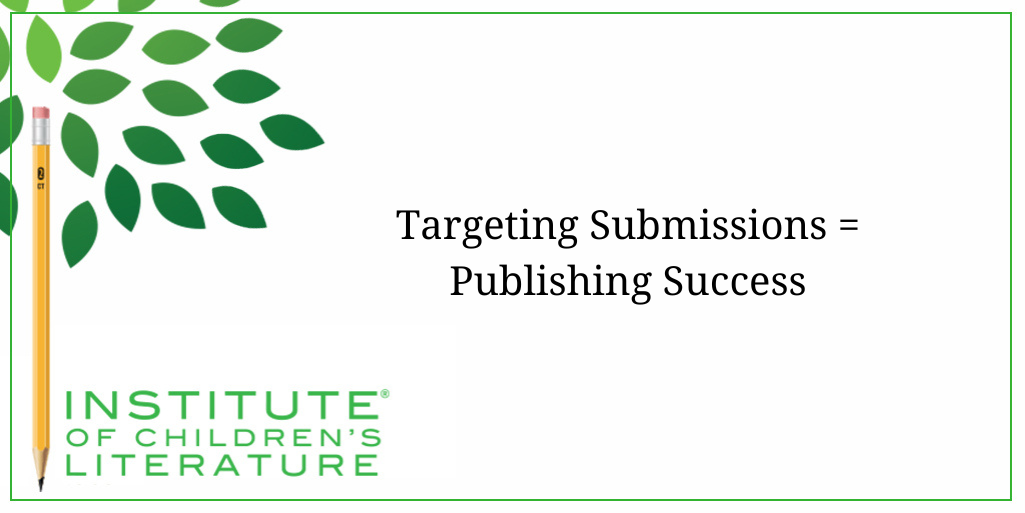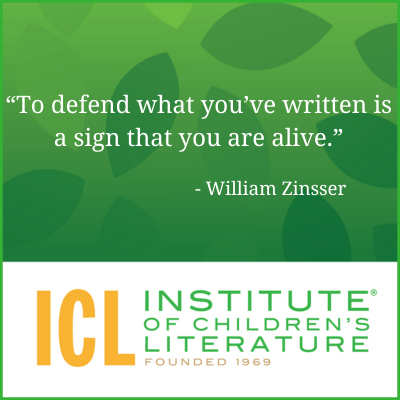
5 Ways Writers Can Prep for 2025 Goal Setting
Before we roll on to the new writing year, let’s harness our optimism for the blank slate before us and prepare for our 2025 Goal Setting just for writers.

Figuring out where you should send your work when it’s finished can be challenging. As a result, some authors simply send it everywhere, but that isn’t the best choice. Instead, carefully researching and targeting submissions will save you massive amounts of time and emotional energy.

This kind of untargeted submission not only wastes the writer’s time and resources, it’s bad for every writer, since the more we flood publishers and agents with inappropriate submissions, the more of them will close the door to submissions at all.
First, it’s important to recognize what propels writers to send out submissions without targeting; the answer is usually frustration and impatience. Writers get into writing because they feel they have skills in writing and often because they want a book. Their focus and passion are on the book, not on manuscript submission. I seriously doubt any writer has ever gotten into the business because of a love of researching and evaluating publishers and agents. Thus, many writers feel like they begin the process hobbled by the fact that it demands skills and knowledge they don’t have readily at hand.

Not targeting submissions carefully means you lessen your chance of being published. You may figure that sending your book to every publisher in a market guide or that you found online increases your chances of publication (more eyes on the manuscript) but that isn’t true. Even if you hit one of the publishers who may be interested, the process of sending scattershot means you probably sent the material to at least one good match, but in some way that ruined your chances. Let’s look at that.
Every publisher and agent who accepts material from writers has a specific way they prefer to be approached. There is no “standard” way to approach a publisher or agent that works for most of them. There used to be, long ago, but even then, the odds of acceptance increased with a well-researched, targeted submission. Today, editors and agents want to be approached in specific ways that work for them and their systems. You’ll need to follow those preferences if you’re hoping for the best result.

1. What is the target age? In children’s writing, that age is NEVER “all ages.” There is always an age group that is the specific target. It may pick up more readers beyond that, but if you haven’t targeted an age group, you’re not going to make a sale.
2. What have you written? Not really knowing what you’ve written is a far bigger problem than you’d think. I see so many writers who say, “I’ve written a children’s book. What do I do next?” Well, “children’s book” encompasses board books, picture books, chapter books, leveled readers, novels, and more.
Plus, there is every chance you haven’t written a children’s book at all, you’ve written a children’s short story or a children’s article, and you’re pitching a magazine product to a book publisher or agent. We’ll talk more this month about how to tell the differences because this is essential for successful targeting.
3. Is it fiction? What’s the genre? This is another place many writers grow concerned. They read that kids like adventure, so they label the story “adventure” when it isn’t, at all.
Genre identification can be hard because words we use to identify genres have slightly different meanings than when we use them casually. We might say, “I have no idea where my keys went. It’s a mystery,” but that’s a very different use of the word than if you’re identifying a story as a mystery. Equally, you might say, “Joey went on an adventure today. He went to the doctor for shots.” But a story based on his experience wouldn’t be an adventure. Identifying what you’ve written correctly will help you avoid confusing or frustrating the editor or agent you’re hoping to impress.
Even nonfiction has types, which you can think of as being like genre. Nonfiction can be narrative (which tells a story), expository (which shares organized facts), or active (like activity or how-to nonfiction.) It can focus on teaching children concepts, or it can encourage change. Correctly identifying your nonfiction will help to convince an editor or agent that you’re a careful, accurate writer, which is essential to selling nonfiction.
Once you know exactly what you’ve written, then you can begin bravely researching what publishers and agents want. This kind of information changes fast. In fact, agent information changes so fast that you’re going to do most of your research for agent submissions online. Thankfully, publisher information is a little easier to come by and your first step will be a good market guide.

Use the market guide as your first step. Follow links and check out publisher websites to see if submission guidelines have changed. In fact, check out everything you can find online about the publisher before you submit anything. You’ll want to know if they are a healthy, viable place for your work. You’ll want to know if they are producing books you’d want yours to sit next to on a bookshelf. And you’ll want to know if they’ve posted new guidelines that contradict what you’ve seen in the market guide. Things change. Take the time to change your submission based on the research you’re doing.
One of the things I do when I send out submissions is to make notes in my market guide. A truly useful market guide will be filled with handwritten notes, highlighted information, and sometimes markets crossed out. When I learn something about a market from my research, I will update my market guide. This can include changes in how a publisher receives information. During the pandemic, most publishers finally switched over to electronic submissions to avoid physical contact with manuscripts. Some use electronic uploaders for submissions. Some accept email. Many require you to begin with a quick contact, a pitch, query, or proposal before you are asked to send a partial of a long manuscript and then later, a full manuscript.

Many writers (and I’m not above it myself) believe that the manuscript would speak better for itself since writing pitches and synopses is challenging. But the problem is time on the part of the publisher or agent. They simply don’t have time to read something long when something short will tell them if the project is interesting to them.
For example, suppose you pitch a romance story that takes place in a haunted house, but the agent who receives the pitch hates ghosts and hauntings and anything connected to such things. That agent doesn’t need to read the manuscript to know it doesn’t work for them. The shortest description of the project, the pitch, revealed the problem.
Throughout this month we will talk more about submissions, pitches, proposals, and how to best get them to the people who will respond positively and afford you the publishing result you’re dreaming of. So, grab your market guide, hold it tight, and let’s spend a month in the thick of the submissions challenge.
With over 100 books in publication, Jan Fields writes both chapter books for children and mystery novels for adults. She’s also known for a variety of experiences teaching writing, from one session SCBWI events to lengthier Highlights Foundation workshops to these blog posts for the Institute of Children’s Literature. As a former ICL instructor, Jan enjoys equipping writers for success in whatever way she can.

Before we roll on to the new writing year, let’s harness our optimism for the blank slate before us and prepare for our 2025 Goal Setting just for writers.

Writers can be thin-skinned when it comes to getting feedback on their work. Let’s look at 4 ways to positively deal with constructive criticism!

Rejection is part of the territory when it comes to being a writer. Today we offer reflection for writers to help redirect your efforts after a rejection.
1000 N. West Street #1200, Wilmington, DE 19801
© 2024 Direct Learning Systems, Inc. All rights reserved.
1000 N. West Street #1200, Wilmington, DE 19801
© 2024 Direct Learning Systems, Inc. All rights reserved.
1000 N. West Street #1200, Wilmington, DE 19801
© 2024 Direct Learning Systems, Inc. All rights reserved.
1000 N. West Street #1200, Wilmington, DE 19801
© 2025 Direct Learning Systems, Inc. All rights reserved.
1000 N. West Street #1200, Wilmington, DE 19801
©2025 Direct Learning Systems, Inc. All rights reserved. Privacy Policy.
4 Comments